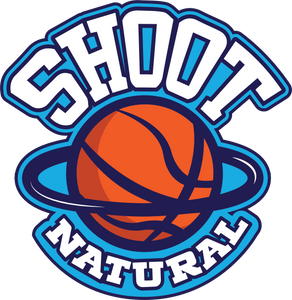The Most Common Basketball Shots and How to Master Them
Shooting is the most fundamental skill in basketball. Since the objective is to score more baskets than the other team, becoming a good shooter is the best thing you can do to become a good player.
However, it's not just attempting as many shots as you can, but also being as accurate as possible. That also means being able to score from every possible situation from anywhere on the court. There are different ways to shoot and score baskets, and mastering those different shots can make you more potent with your offense.
Here are the many types of shots you can take in basketball and how to master each of them.
Jump Shot
The most fundamental of all shots in basketball, the jump shot is the one shot you have to be good at in order to be an asset on the court. Even if you’re not athletically talented, you can still become a good player by being a good jump shooter, both at the perimeter and beyond the three-point line.
There are many factors that all need to align in order to shoot a good jump shot. Foot position before taking a shot, hand position on the ball, bending the knees, bringing the ball up as you jump, position of your shooting hand, position of your shooting hand, position of your guide hand, and shooting at the top of your jump.
When all those factors align, you get a perfect jump shot. However, the most common mistake people do with their jump shot, even among professional players, is the misuse of the guide hand. The guide hand is just there to guide the ball as it goes up. It’s not to impose any force onto the ball, which is what the shooting hand is for.
But it can be really tough to break the habit of your guide hand joining the shooting hand in shooting the ball, even if you’re trying to force it to stay still and out of the way in practice. That’s where the Shoot Natural glove can come in to help keep your hand in place so you can then learn to shoot with the shooting hand alone.
Free Throw
Think of the free throw as a jump shot without the jump that’s done from a certain distance. Mastering the free throw is important because it’s the most basic shooting motion in the most simplified form possible.
Once again, like with the jump shot, how you hold the ball as you’re about to shoot it is crucial. You have to get your shooting hand in the right position and your guide hand to not interfere with the ball’s trajectory. The Shoot Natural glove is perfect for practicing your free throw shot.
You can say that bending your knees to shoot a free throw is even more important than with the jump shot since you’re not supposed to jump while still having to generate the appropriate amount of force to shoot the ball into the basket that’s 15 feet away. Bend your knees and shoot in one fluid motion.
It also requires the highest level of focus to sink a free throw without letting distractions get to your head. A good way to do this is to have a routine, like bouncing the ball a certain number of times or something else. The purpose of this is to serve as a trigger for the brain to go into “free throw mode” that lets you focus on
Controlling your breathing is also important. You’ve been playing for a while now, so your heart rate is up and adrenaline is coursing through your body. Take a couple of deep breaths to steady your body and mind so you can sink those free throws.
Also, making or missing a free throw at the last seconds of a game can mean the difference between winning and losing. Nothing feels worse than letting your team down because you missed a free throw in a really close game.
Hook Shot
The purpose of the hook shot is to effectively shoot the basketball at or near the paint over a contesting defender. This is an important shot to learn for frontcourt players (centers and forwards) who tend to be positioned nearer to the basket during offense.
It’s basically a one-handed shot that goes over your head. The key is to be aligned with the basket and shoot the ball at the jump. It’s basically like a sideways jump shot with one hand.
While you can’t aim like with a normal jump shot as the ball isn’t in front of your face, you can aim with your body by making sure your shoulder is aligned with the basket. In some cases, you don’t have to be completely sideways, but the important thing is you’re able to make the shot while being contested by defenders.
Don’t do a hook shot if you’re too far away from the basket. At best, this shot is done at around 12-15 feet at most, but it’s best done near or in the paint. When you’re doing it, make sure there’s no one behind you who’ll suddenly block your hook shot.
Floater
This shot is somewhat similar to a jump shot, but it’s done while running to the basket. You do a floater if you’re too far away from the layup and you have neither time nor space to stop and take a jump shot.
You don’t flick your wrist to do a floater, but merely lift and push the ball gently while your forward momentum takes the ball towards the basket. There’s no spin imparted on the ball, with only the palm gently propelling it forward.
A floater is ideal when the paint is guarded by defenders, and it’s great for shooting over tall defenders. It’s a shot that’s best learned by feel, but remember the basic principles of the jump shot to understand how to transition towards learning this shot.
Layup
The main weapon of slashers, the layup is a dynamic shot that is easy to learn but hard to master. You have to be good at handling and running with the basketball in order to use layups to score from fastbreaks. To master layups, you have to understand at least three basic things.
If you’re running to the basket while dribbling with your right hand, you should approach the right flank and layup with the right. If you dribble with your left, approach the left flank. It’s better to lay the ball up from the side of the basket than right down the middle as it will have less tendency to bounce off the rim.
Once you get to the three-point line, stop dribbling and take two long strides and lay it up. It’s only travelling if you take three strides without dribbling the ball. The first long stride is the gather step, which lets you gather the basketball with both hands and prepare for your shot. The second step is your launching step, which lets you go for the layup.
Finally, you have to make sure that with those two long strides, you slow down enough to make sure your momentum doesn’t add too much energy to the ball. While practicing your layup, count as you take those final two strides. Go “1-2” before you lay it up. Soon enough, you’ll get the rhythm and you’ll improve your layups.
Laying it up requires little to no force from the ball as most of its energy comes from your forward momentum. Most of what your hand imparts to it is only upward force so it goes up to the basket. If it gets too much force going forward, the ball will just bounce off the backboard hard.
Dunk
Not everyone will be able to dunk. That’s a fact that can’t be ignored. If you don’t have the size and/or jumping ability to comfortably dunk a basketball with at least one hand, then you may skip this part.
If you’re one of the fortunate ones who can dunk, you may think it’s easy enough to master since it’s pretty much putting the ball right there in the basket. How can anyone miss a dunk?
However, people do sometimes miss their dunks. It happens every now and then, even in professional games. There’s also proper technique involved in both doing a good dunk and landing back down on the floor without getting injured.
The key is to make sure that at least your wrist goes above the rim at the top of your jump. If you can go only up to your fingers, you can’t dunk reliably. If you can only go up to your palm, you may make most of your dunks, but some will bounce off.
You can get better elevation if you launch off of two feet. However, you will require a bit more time and space in order to dunk off of two feet in a real game. This gives enough time for defenders to go over you and stifle your dunk.
Whenever you land, try to do so on two feet. There have been too many injuries in professional leagues that are from sketchy landings on one foot, either a catastrophic failure of the leg or accumulated stress from landing on it all the time.
Conclusion
If you can get good at the first two and a couple of the following shot types, you can definitely play basketball pretty well. You can work on other aspects of your game to be able to create shots instead of just hoping to catch a pass.
But by then, as long as you’ve mastered many of these shots, you’re already halfway there. Because if you can shoot, you can play.

